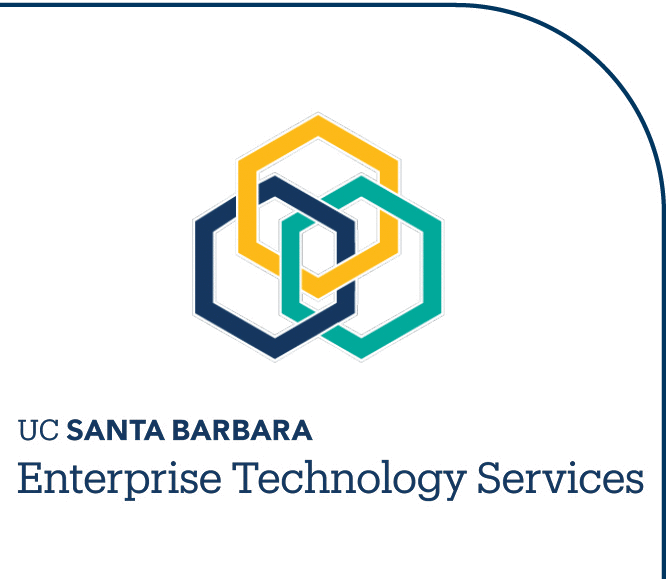The Communications Services department has installed fiber optic cable between many buildings on the UCSB main campus. New buildings are added to the ring as they are built. The Office of Information Technology also adds fiber segments as part of its Next Generation Backbone development. This cable plant is used to support high speed data communications and parts of the campus CATV network, but may eventually also support voice communications.
The original cable plant between buildings contains 48 individual strands of multi-mode fiber optic cable. Subsequent additions to the plant added 48 multi-mode and 12 single-mode strands of fiber. The cable specification since 1999 places 48 multi-mode and 48 single-mode fiber cable. A procedure for the allocation of the available fiber optic strands has been developed and reviewed by academic and administrative committees.
This document explains how departmental networks connect to fiber optic cable, and identifies other financial, administrative, and technical issues associated with use of the fiber cable plant.
Connecting to the Fiber Optic Cable Plant: Physical Connections
For departmental networks to intercommunicate with other networks, whether on campus or off campus, the departmental network must connect to the cable plants. The data communications services supported by the two utility cable plants are different, so some departmental networks may connect to only one of the two plants, while some may connect to both.
Regardless of the service or protocol used on the utility fiber optic cable plant, all departmental networks connect to the cable identically. The remainder of this section explains the physical connection in detail. Please refer to the drawing Fiber Optic Cable Plant Physical Connections for a graphical presentation of the connection components.
Communications Services has installed fiber optic cable between several buildings on the main campus. Each fiber cable segment may contain both multi-mode and single-mode fiber strands in quantities of 6 to 48 of each. The fiber cable is commonly installed in a physical ring, where a segment of cable is used to connect each building to its neighbors on the ring. Each building, therefore, has two segments, one which connects to the "left-hand" neighbor and one which connects to the "right-hand" neighbor. The fiber cable (component 1 on the drawing) enters each building and is connected to a Building Termination Panels (component 2). The Building Termination Panels are lockable metal cabinets with two access doors. Each door provides access to one side of a fiber optic connector. Buildings have at least two Building Termination Panels, one to terminate the fiber which enters the building and one to terminate the fiber which leaves the building. On the drawing, components 2 and 4 are the panels in one building and components 6 and 13 are the panels in another building. In small counts (6-24) , multi-mode and single-mode fiber may share the same Building Termination Panels. In large counts (24-48), the multi-mode fiber and the single-mode fiber will have separate Building Termination Panels.
If there are no networks within a building which need connection to the fiber optic cable plant, the fiber cable entering the building is directly connected to the fiber cable leaving the building. This configuration is shown on the drawing by the components:
- Component 1 – Fiber cable into the building
- Component 2 – Building Termination Panel for entering fiber cable
- Component 3 – Fiber optic jumper cable between entry and exit fiber
- Component 4 – Building Termination Panel for existing fiber cable
- Component 5 – Fiber cable to the next building on the physical ring
If there are networks within a building which need connection to the utility fiber cable plant, several additional components must be installed. Because the Building Termination Panels are an integral component of the utility fiber cable plant, access to these panels is restricted to Communications Services personnel. Customers within buildings connect to the utility fiber optic strands via a Fiber Patch Panel (component 8). The Fiber Patch Panels are identical to the Building Termination Panels in all ways except for size. A Building Termination Panel provides access to all forty-eight (48) multi-mode and single-mode fibers in a cable segment; a Fiber Patch Panel provides access to a maximum of twelve (12) fiber strands of either multi-mode or single-mode fiber.
The Fiber Patch Panel (component 8) connects to both of the Building Termination Panels (components 6 and 13) using fiber optic cable (components 7 and 12). The Fiber Patch Panel also connects to the customer's fiber optic equipment (component 10) using fiber optic cable (component 9). Finally, the customer's fiber optic equipment connects to the customer's network (component 11), using whatever type of cabling is appropriate (Ethernet cable, twisted pair cable or fiber optic cable). In this model, the customer's fiber optic equipment could be a bridge, router or gateway switch.
Estimated Costs of Physical Connections
The cost of acquisition, installation, and maintenance of the physical components used to connect a customer's network to the utility fiber optic cable plant is shared by Communications Services and the customer. Quotes for a specific installation can be obtained from Communications Services upon written request. It should be noted that the fiber optic cable plant is an "unsupported" service; that is, construction, maintenance, and repair are only available on a time and materials basis. Customers using the fiber optic cable plant should evaluate their need for spare components (e.g., fiber patch cables) and for response time for repair of fiber cable.
Obtaining an Allocation of Fiber Optic Cable
Please refer to the Procedure for Allocation of UCSB Fiber Optic Cable Pairs.
DCC

